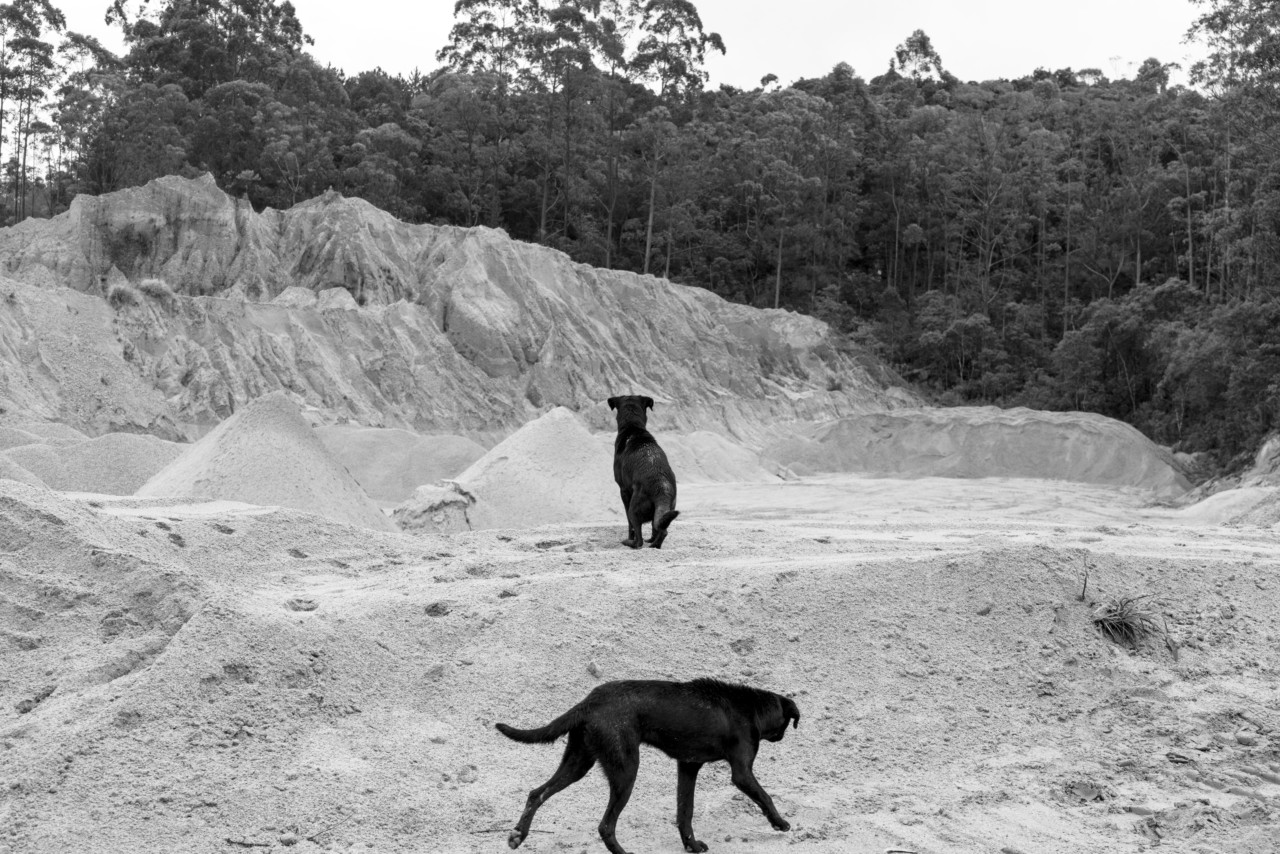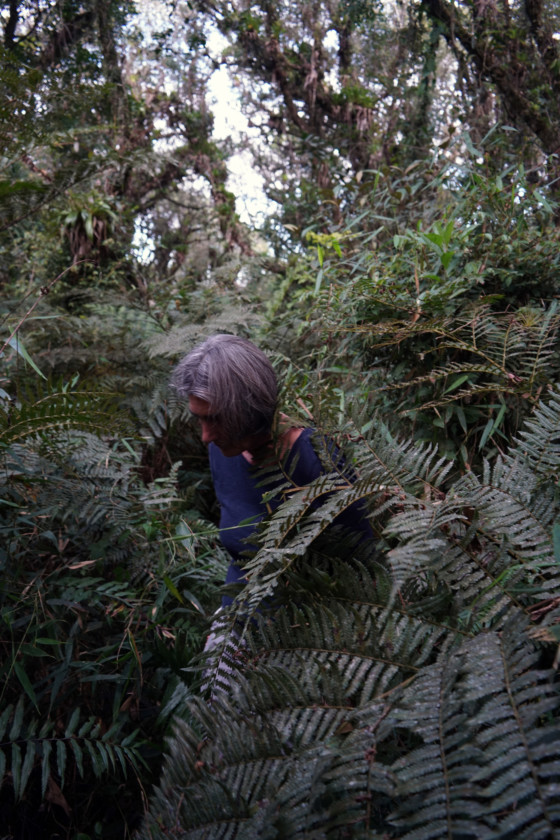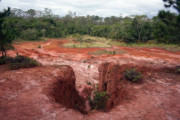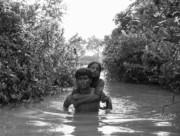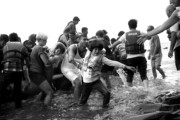A Window into Brazil’s Past
Moises Saman’s photographs of the Colônia basin in Brazil offer an insight into how changes to the landscape affect us on a human level
Why are tropical forests so rich in species? For several decades, scientists have been asking this question without much success — until now.
Usually, when it comes to charting the Earth’s history over hundreds of thousands of years, we use ice cores or marine sediments; in rare cases, lake sediments allow us to trace the past climates of temperate regions. But in the tropics of the southern hemisphere, no continental record has yet allowed us to piece together climates over such time scales.
That’s why the Colônia basin in Sao Paulo, Brazil is so exceptional — and so fascinating to researchers. Formed between 1 million to 20 million years ago, this strange bowl-like depression has a diameter of 3.6 kilometers and is 275 meters deep. Geologists haven’t been able to determine its precise cause but one thing is clear: the depression has accumulated sediment for hundreds of thousands of years, providing a unique opportunity to go back in time and explore the past climate changes in the Brazilian rainforest.
Since 2000, Marie-Pierre Ledru, a scientist at the French Institute of Research and Development, has been analyzing and sampling the site. A core drilling 14 meter deep carried out in 2014 allowed for an analysis of the hydrological changes, the variability of the temperatures and the biodiversity over the last 250,000 years. But she wanted to go further: drill down 50 meters in order to study the last 800,000 years, which would include a series of several glacial or interglacial cycles. It would offer a new window into the past.
“There is still no continuous analysis over 800,000 years in the tropical regions of the southern hemisphere,” says Ledru, whose research inside the basin is supported by the BNP Paribas Foundation. This drilling would therefore, for the first time, help scientists understand how a tropical forest — in this case Brazil’s Atlantic Forest — has responded to major natural climate cycles.
The “Colônia project” aims to reconstruct the landscape and changes to the biodiversity of this forest over a geological era. For at least 11,000 years, indigenous people have lived in the Atlantic forest; and over the last 500 years, migrants have little by little occupied the region, forming the metropoles and favelas that we know today. Facing the challenges of urbanization, as well as political, climatic and environmental change, these people are fighting to maintain their traditions and to survive in the changing world.
Colônia reminds us that we live in a world of perpetual change. While we once saw these changes over vast periods of time, now they take place from generation to generation — and we must be prepared.
Moises Saman’s photographs from Brazil offer an insight into how these changes to the landscape affect us on a human level, exploring how people will survive as their traditions come under threat and natural resources cut off. Hundreds of Guarani Indians occupy land inside areas of environmental protection, but the legislation protecting these lands is only a few decades old and a great deal of damage has already been done before then — and illegally since.
Saman also shows us the constant interplay between nature and people here — horses and dogs in fields inside the Colônia basin; a farmer working on a field of planted vegetables in another area — and the damage that humans have done to the environment, like polluting the Guarapiranga Lake with trash and other debris, harming the indigenous communities who once used it as a natural resource. The destructive effect of sand mining on the environment has been another factor in the deterioration of the Atlantic Forest’s biodiversity, and the acceleration of climate change.
The core drilling was planned for summer 2017, involving specialists from eleven laboratories in France, Germany, Brazil, Switzerland and the United Kingdom. The data provided would improve our understanding of how different elements of nature respond to the variations in the amount of sunlight reaching the Earth and how these changes have led some species to thrive in the jungle, while others have become extinct.
“One of our hypotheses is that the rich biodiversity of tropical forests comes from a permanent reassembly of species during major climate cycles. This reassembly would respond above all to changes in exposure to sunlight rather than glacial or interglacial cycles,” says Ledru. The researchers therefore expect to find links between species that evolve each time according to the cycles of sunlight exposure (also called Milankovitch cycles). In comparison, temperate forests show a repetition of their floristic assemblages from one glacial or interglacial cycle to another.
This project also aims to compare these in situ recordings with the results of different climate models and see whether mathematical equations manage to correctly trace the evolution of this forest — hopefully improving the reliability of climate reconstruction models, past and future, in the tropics.
Saman’s photographs show how man-made changes to the environment have also transformed the way of life for the indigenous people in parts of the forest, particularly the Guarani Indians, who have lived there for centuries. Centuries of logging and hunting have made it difficult for animals to survive — and consequently for the people to find enough animals to hunt. Many are forced to go to the cities to find resources; lacking traditional healing herbs in the woods, they have to go to ‘natural product’ stories in the city to buy what was once theirs.
“We have to stay up to date,” says the chief, Fabio Verissimo. “We must learn and teach our children how to stay up to date with what happens in the world at large. But we don’t want to lose our culture, our way of life.












